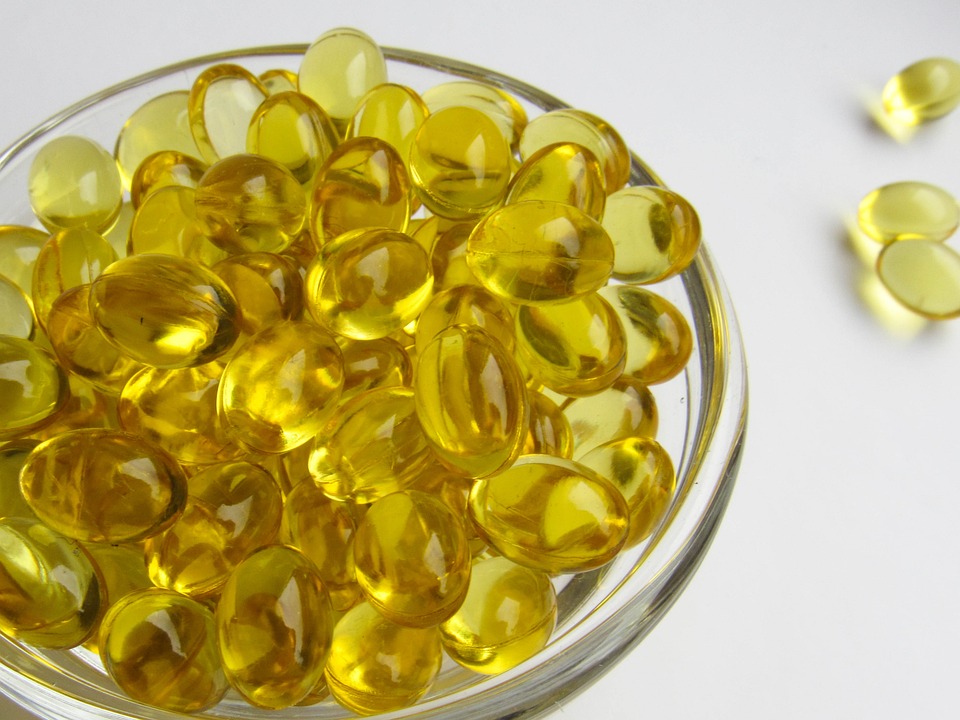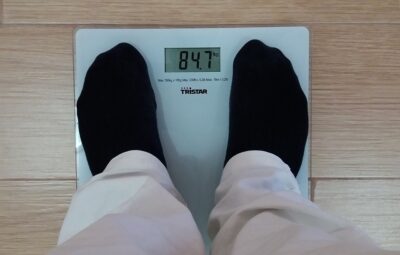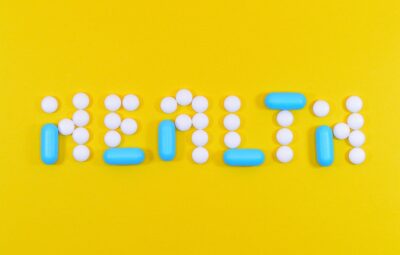Vitamin D is unique. It belongs to a family of vitamins and nutrients that share similar structures, and yet, it really isn’t a vitamin at all but acts more like a prohormone. There are five forms of Vitamin D – D1, D2, D3, D4, and D5. However, the main forms of Vitamin D are Vitamin D2 (ergocalciferol) and Vitamin D3 (cholecalciferol). Fascinating in the fact that Vitamin D is the only vitamin that is synthesized through the skin, from exposure to sunlight, there are some significant differences between Vitamin D and Vitamin D3 that you should know when searching for the best supplement to increase your Vitamin D levels.
What Is Vitamin D?
Vitamin D is classified as a fat-soluble vitamin yet acts like a pro-hormone. Fat-soluble vitamins are best absorbed and provide more bioavailability when taken with foods higher in fat. When these specific vitamins are not taken with enough fat, they pass through the GI tract without much effect or absorption. Swolverine encapsulates its Vitamin D3 in Olive Oil to provide healthy essential fats to optimize absorption and provide maximum potency. Vitamin D promotes calcium absorption, regulates bone growth, and plays a pivotal role in your immune system. Studies show that Vitamin D may also assist in the prevention of chronic disease states as well as help regulate mood.
How Does Vitamin D Work?
When your skin is exposed to sunlight, specifically ultraviolet B (UVB) rays, your body naturally produces Vitamin D3. D2 is created in a similar fashion, yet through the synthesis of sunlight by mushrooms and plants. There are three ways you can obtain vitamin d for your body – from the sun, vitamin d supplements, and from food, preferred in that exact order. Wow, supplements over the food, you say? Yes, exactly. The reason is simple: most individuals aren’t exposed to UVB rays for at least 15 minutes a day, uncovered and unprotected (that means no sunscreen, makeup, or clothing). Foods fortified with Vitamin D2 also don’t contain enough vitamin D to provide the body with the recommended daily intake (RDI) of Vitamin D. For these reasons, vitamin D3 supplementation is the most effective way to get the daily recommended amount of vitamin D.
It’s estimated that nearly 1 billion people, or 50% of the world population, are vitamin d deficient. Low vitamin d levels can result in abnormalities in bone metabolism, slow wound healing, chronic fatigue, depressed mood states, muscle weakness, and depression.
According to a national nutrition examination survey, 41.6% of US adults exhibited vitamin d deficiency, with the highest rate seen in African Americans at 82.1%, followed by those of Hispanic descent at 69.2%.
What Are The Differences Between Vitamin D And Vitamin D3?
Both Vitamin D and Vitamin D3 are processed in the body by the liver to 25-hydroxyvitamin D, which increases 25D levels.
Vitamin D2, referred to as Vitamin D, is largely human-made and derived from plant sources. Vitamin D is produced by plants when they’re exposed to UV light (similar to the way we explained earlier that humans produce Vitamin D3).
Vitamin D2 is commonly found in fortified foods, such as milk and cereal products, or in supplement form. While this form is often pressed into a tablet supplement and consumed by people adhering to restricted diets, your body doesn’t actually produce this form of vitamin D naturally, making it a poor-quality nutrient when it comes to fulfilling your daily requirement of vitamin D.
In food, vitamin D is measured in micrograms with the suggested daily intake of 25-100 micrograms per day is needed to maintain optimal blood levels (that’s 1000-4000 IU in supplement talk).
Examples of Foods High in Vitamin D:
- Fatty Fish (salmon, trout, swordfish) = 9-17 micrograms per 3oz serving
- Mushrooms (portabella, exposed to UV light) = 7.9 micrograms per ½ cup serving
- Whole Milk = 3.2 micrograms per 1 cup serving
- Orange Juice (fortified) = 2.5 micrograms per 1 cup
- Eggs (hard-boiled) = 1.1 micrograms per 1 large egg
As you can see from the examples above, even the best food source of vitamin D doesn’t contain nearly enough micrograms (remember, you need up to 100 micrograms per day) to provide sufficient delivery and function within the human body. Vitamin D2 is used as an inexpensive, low-quality, and less effective option to boost nutrient quality as compared to Vitamin D3.
Vitamin D3 is obtained through animal sources such as fatty fish (salmon, tuna, mackerel), egg yolks, and liver. Studies have shown that Vitamin D3 is the preferred form to elevate vitamin d blood concentration. In fact, research evaluating the effects of both Vitamin D and Vitamin D3 on serum d concentration indicates that Vitamin D3 is 85% more effective at raising Vitamin D concentration and provides 300% greater storage of Vitamin D than Vitamin D2.
Similarities between vitamin D and D3
Vitamin D and D3 are both ultimately metabolized to the active metabolite form, calcitriol. From calcitriol come the important end results of a healthy level of vitamin D in your body. Calcitriol promotes renal absorption of calcium, increases intestinal absorption of both calcium and phosphorus, and increased mobilization of calcium from bone to plasma. Calcitriol has even been shown to inhibit cancer cell growth. Ultimately both vitamin D and D3 provide your body with the critical metabolite calcitriol.
Conditions Treated By Vitamin D and D3
Vitamin D2, as a prescription, is used to treat hypoparathyroidism (decreased parathyroid hormone secretion), vitamin D-resistant rickets, and hypophosphatemia (low levels of phosphorus in the blood). It is commonly used for vitamin D insufficiency in both its prescription and over-the-counter formulations. The FDA does not approve treatment claims for over-the-counter vitamin supplements, therefore, even though this use is very common, it is considered off-label.
All forms of vitamin D3 supplements are available over-the-counter and therefore are not FDA-approved to make treatment claims. However, vitamin D3 is commonly used off-label to treat hypoparathyroidism and vitamin D deficiency, as well as for osteoporosis prevention.
Is Vitamin D or D3 more effective?
Vitamin D2 and D3 are absorbed into the bloodstream, where they are metabolized by the liver into 25-hydroxyvitamin D2 and 25-hydroxyvitamin D3, otherwise collectively known as 25D or calcifediol. Calcifediol is the vitamin D complex circulating in your blood, and its levels directly reflect your body’s stores of vitamin D. Calcifediol is commonly referred to as the active form of vitamin D. When your doctor orders lab tests to check your vitamin D levels, they are measuring your calcifediol (25D) levels. Calcifediol is the precursor to calcitriol, the ultimate active metabolite of vitamins D and D3.
There have been several studies comparing whether supplementation with vitamin D2 or D3 produces a higher blood level of calcifediol. A study published by the National Institutes of Health was conducted on elderly, post-menopausal women who had been identified as vitamin D deficient. It compared the effects of receiving a single high dose of vitamin D2 or vitamin D3 on calcifediol levels. The study concluded that vitamin D3 produced about twice the amount of circulating calcifediol in this patient population versus that of vitamin D2.
In a separate clinical trial comparing a 10-week regimen of twice weekly 50,000 IU dosing of both vitamin D2 and vitamin D3 in demographically matched groups, vitamin D3 was also found to be superior in producing higher levels of 25D or calcifediol.
In terms of the lab tests which measure vitamin D levels, your doctor may evaluate total 25D or free 25D, or both. Controversy remains on which lab test is the best measure of your body’s vitamin D stores, but these studies showed that vitamin D3 was superior in raising both levels.
Common Side Effects of vitamin D vs. D3
There are no common side effects to therapy with either vitamin D2 or D3. Side effects related to vitamin D are the result of hypervitaminosis D, an extremely rare condition that occurs when you intake too much vitamin D. This is sometimes seen in patients who take megadoses of vitamin D, leading to vitamin D toxicity. The result is a build-up of dangerously high levels of calcium in the blood, which can lead to nausea, vomiting, constipation, and frequent urination. If left untreated, irreversible renal failure can occur along with the calcification of organs and soft tissues.
Drug interactions of vitamin D vs. D3
Vitamin D2 and D3 each are metabolized by the liver to 25D, and therefore the potential drug interactions are similar for both forms. Vitamin D may increase the serum levels of aluminum when taken with aluminum hydroxide, a common antacid, and therefore the combination should be avoided. Thiazide diuretics, such as hydrochlorothiazide, may increase the chance of vitamin D raising calcium levels in the blood to a dangerously high level. Patients on both thiazide diuretics and vitamin D supplementation should be monitored for this effect by their healthcare provider. Some drugs may decrease the absorption and effectiveness of your vitamin D supplement. Bile-acid sequestrants, such as cholestyramine, are an example of a drug that will impair vitamin D absorption. Vitamin D and cholestyramine should not be administered at the same time.
Coverage and cost comparison of vitamin D vs. D3
Vitamin D2 in prescription form is commonly covered by most commercial and Medicare insurance plans. The over-the-counter formulations are typically not covered by commercial or Medicare insurance plans. The price can vary greatly depending on the dosage. The average cost of the 50,000 IU dose for 12 weeks of therapy is $54. With a coupon from SingleCare, this price drops to as low as $2.
Vitamin D3 is over-the-counter and therefore is typically not covered by insurance plans. The price varies depending on the dose. D3 can cost as much as $50 per one-month supply, but if your doctor prescribes the medication, you can get it for as low as $8 with a SingleCare discount coupon.
What Are The Symptoms Of Low Vitamin D?
Signs and symptoms of low vitamin D may include
- Chronic Fatigue
- Muscle Atrophy
- Muscle Pain
- Weakened Immune System Health
- Depressed Mood State
- Back Pain
- Impaired Wound Healing
If you’re exhibiting any of these signs or symptoms, consult your physician and have a blood panel done. Chances are you have low vitamin d levels. By adding a high-quality vitamin D3 supplement to your daily routine, you may be able to improve your immune health, relieve chronic fatigue, and improve your overall quality of life. Vitamin D deficiency affects more than 1 billion people, or 50% of the world’s population. Oftentimes, obtaining the recommended amount of vitamin d through sun exposure and diet alone does not suffice.
What Is The Best Time To Take Vitamin D?
Vitamin d is a fat-soluble vitamin. Therefore it’s recommended to take Vitamin d or D3 with a meal for proper absorption. If your Vitamin D or D3 supplement is suspended in oil or fat, then you can take your vitamin d at any time.
Warnings of Vitamin D and D3
Vitamin D toxicity may occur with excessively high doses. Symptoms could include nausea, vomiting, loss of appetite, constipation, dehydration, fatigue, and confusion. Due to the fact that vitamin D is a fat-soluble drug, the effects of vitamin D therapy can last 2 months or more after therapy is discontinued. It is also important to know the vitamin D content of other supplements you may be taking, such as a daily multivitamin. You should not take high doses of vitamin D supplements without your doctor’s instruction.
Takeaway
Studies suggest that Vitamin D3 is the preferred form of vitamin d supplementation. When you’re searching for the best vitamin d supplement, it’s important to find a supplement that is paired with fat to maximize absorption and potency. If you’re not sure if you need a vitamin d supplement, it’s important to consult your physician. The recommended dose is dependent upon your 25-hydroxyvitamin D levels obtained from a blood panel. This will determine which form and dose are best for you.







